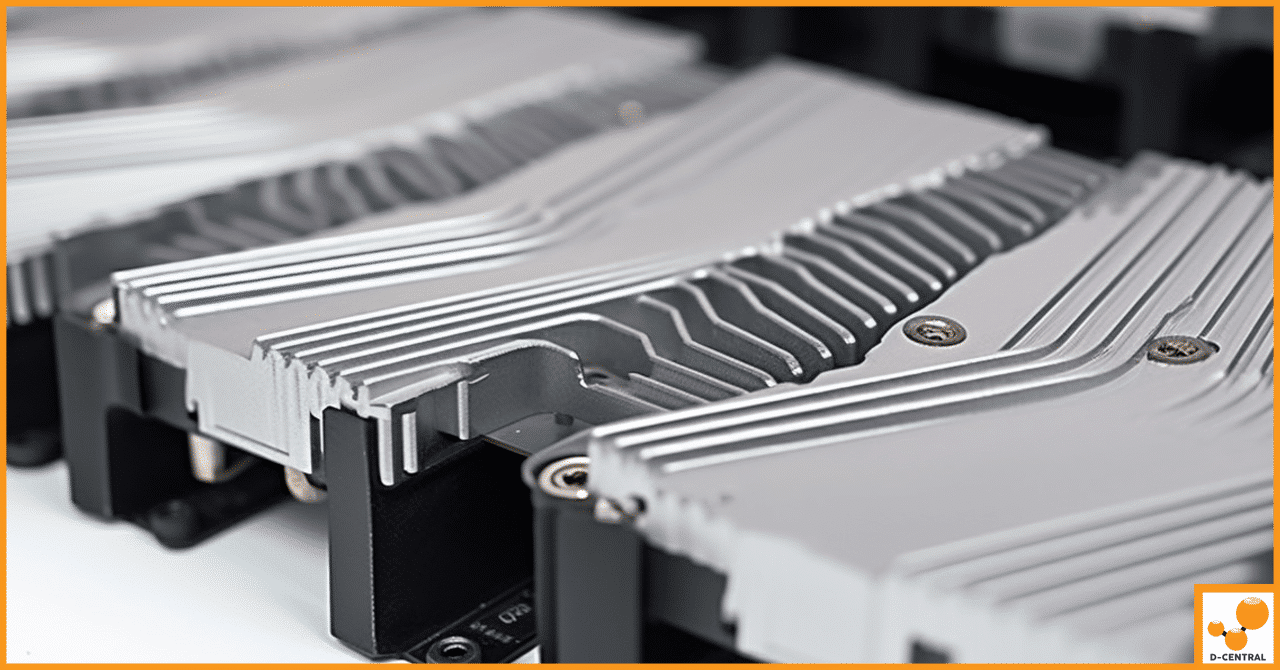
Unleashing the Potential of Hydro Cooling for AvalonMiner Models
In the Bitcoin mining world, the AvalonMiner 1066, AvalonMiner 1246, and AvalonMiner 1346 have gained popularity for using 16nm, 12nm,
4479 Desserte Nord Autoroute 440, Laval, QC H7P 6E2

In the dynamic world of digital currencies, the Proof-of-Work (PoW) system stands as a cornerstone technology, particularly in the realm of Bitcoin, the first and most prominent cryptocurrency. PoW is not just a technical term; it represents a fundamental concept that underpins the security and functionality of many cryptocurrencies. At its core, PoW is a consensus mechanism, a method used to achieve agreement on a single data value among distributed processes or systems. In the context of Bitcoin and several other cryptocurrencies, PoW is the process that enables the network to confirm transactions and create new blocks in the blockchain.
The significance of PoW in cryptocurrency cannot be overstated. It is the mechanism that ensures the integrity and chronological order of the blockchain, preventing double-spending and ensuring that the network remains decentralized and secure. By requiring miners to solve complex mathematical problems, PoW makes it exceedingly difficult for any single entity to manipulate the blockchain. This process, while computationally intensive, is what gives Bitcoin and similar cryptocurrencies their trustworthiness and resilience against fraud.
However, the PoW system is not without its controversies, particularly regarding its energy consumption and environmental impact. The debate centers around the substantial amount of electrical power required to perform the complex calculations needed for mining activities. As the value of Bitcoin and other PoW-based cryptocurrencies has soared, so too has the number of miners and, consequently, the overall energy consumption of these networks. This surge in energy demand has raised concerns among environmentalists, policymakers, and even investors about the sustainability of the PoW system.
Critics argue that the energy expenditure of PoW networks, especially Bitcoin, is excessive and unsustainable, contributing significantly to carbon emissions and environmental degradation. On the other hand, proponents of PoW assert that the energy usage is relative and must be weighed against the security and decentralization benefits it provides. They also point to the increasing use of renewable energy sources in mining operations as a mitigating factor.
As the debate continues, it becomes clear that the conversation around PoW’s energy consumption is not just about numbers and technicalities; it’s a discussion that touches on broader themes of environmental responsibility, technological innovation, and the future of digital finance. This article delves into the heart of this debate, exploring the intricacies of the PoW system, its impact on our planet, and the ongoing quest for a sustainable path forward in the ever-evolving landscape of cryptocurrency.
Proof-of-Work (PoW) is a consensus algorithm that underlies the functioning of several cryptocurrencies, most notably Bitcoin. It is a mechanism used to validate transactions and create new blocks in a blockchain. In essence, PoW requires network participants, known as miners, to solve complex mathematical puzzles. The primary purpose of this process is to prevent network abuse, such as double-spending and spam transactions, by making it computationally demanding and thus costly to attack or manipulate the network.
The concept of PoW predates Bitcoin and cryptocurrencies. It was first proposed in 1993 by Cynthia Dwork and Moni Naor as a method to deter spam emails. The idea was later adapted by Adam Back in 1997 in his Hashcash system, which required a proof of computational effort for sending emails, thereby making spamming activities resource-intensive and less feasible.
The seminal moment for PoW came with the creation of Bitcoin by an individual or group under the pseudonym Satoshi Nakamoto in 2009. Nakamoto integrated PoW into Bitcoin’s design, repurposing it to secure the blockchain, the digital ledger that records all transactions of the cryptocurrency. This integration marked the first successful application of PoW in achieving decentralized consensus for a digital currency.
In the context of blockchain technology, PoW involves solving a cryptographic puzzle. This puzzle is designed to be difficult to solve but easy to verify. The process typically involves finding a hash – a fixed-length alphanumeric string – that is below a certain target. Miners use high-powered computers to generate numerous hash combinations in rapid succession until one finds the correct hash.
When a miner successfully solves the puzzle, they are allowed to add a new block of transactions to the blockchain. This block contains a record of recent transactions, the solution to the puzzle, and a reference to the previous block’s hash, creating a chain of blocks – hence the term blockchain.
The difficulty of the puzzle adjusts automatically depending on the network’s total mining power to ensure that the time taken to find a new block remains consistent, typically around 10 minutes for Bitcoin. This self-adjusting mechanism ensures network stability and security, even as the number of miners fluctuates.
The successful miner is rewarded with a certain number of newly created bitcoins (known as the block reward) and transaction fees paid by users. This reward serves as an incentive for miners to contribute their computational power to the network, maintaining its integrity and trustworthiness.
In summary, PoW is a critical component of blockchain technology, providing a decentralized and secure method to validate transactions and create new blocks. Its evolution from a concept to deter spam to a cornerstone of cryptocurrency security underscores its versatility and effectiveness in maintaining the integrity of digital transactions in the blockchain era.
Proof-of-Work (PoW) based cryptocurrencies, notably Bitcoin, require substantial energy for their mining processes. This energy consumption is primarily due to the computational intensity of solving the cryptographic puzzles necessary for validating transactions and securing the blockchain. Each miner competes to solve these puzzles using high-powered computer systems, which consume large amounts of electricity.
The energy requirement for PoW is directly tied to the network’s mining difficulty – a parameter that adjusts to ensure a consistent block discovery rate. As more miners join the network, the difficulty increases, leading to greater aggregate computational effort and, consequently, higher energy consumption.
When comparing PoW’s energy consumption to other financial systems, it’s important to consider the entire infrastructure. Traditional banking systems, for instance, involve not just digital transactions but also physical branches, ATMs, and data centers, all of which consume significant energy. However, these systems are often more energy-efficient on a per-transaction basis due to their centralized nature and less computationally intensive processes.
In contrast, digital payment platforms and fintech solutions tend to be more energy-efficient than PoW cryptocurrencies. These platforms leverage centralized processing and cloud computing, which, while still energy-intensive, do not require the same level of computational power as PoW mining.
As of the latest data, Bitcoin’s annual energy consumption rivals that of entire countries. Estimates suggest that Bitcoin mining consumes around 110 to 130 terawatt-hours (TWh) per year, which is comparable to the annual energy usage of countries like the Netherlands or Argentina. This consumption accounts for a significant portion of the world’s total electricity use.
The trend in PoW energy usage has been on an upward trajectory, correlating with the increasing value and popularity of cryptocurrencies like Bitcoin. The introduction of more efficient mining hardware, such as ASICs (Application-Specific Integrated Circuits), has improved energy efficiency in terms of hashes per kilowatt-hour. However, these gains are often offset by the increasing overall computational power of the network.
It’s also noteworthy that the geographic distribution of mining activities impacts the overall carbon footprint of PoW cryptocurrencies. Regions where renewable energy sources are abundant and cheap, such as hydroelectric power in parts of China and Scandinavia, have a lower environmental impact compared to areas reliant on fossil fuels.
While PoW-based cryptocurrencies offer a decentralized and secure financial system, their energy consumption remains a significant concern. The comparison with traditional and other digital financial systems highlights the unique challenges and environmental implications of maintaining a decentralized blockchain through PoW. As the cryptocurrency market continues to evolve, the energy consumption and efficiency of PoW systems remain critical areas for innovation and improvement.
One of the innovative solutions offered by D-Central Technologies in addressing the environmental concerns associated with PoW is the repurposing of electronic waste. D-Central takes a significant step towards sustainability by refurbishing ASIC (Application-Specific Integrated Circuit) miners and converting them into space heaters. This approach not only extends the life of mining hardware, reducing electronic waste, but also dual-purposes the energy used in mining.
By transforming obsolete mining equipment into space heaters, D-Central Technologies provides a practical solution to the heat waste problem inherent in mining operations. This initiative demonstrates a commitment to environmental responsibility, showcasing how technological innovation can be harnessed to address ecological concerns effectively.
While D-Central Technologies does not directly engage in methane mitigation projects, it plays a supportive role by working with and empowering companies that specialize in this area. Methane mitigation involves using excess methane from sources like landfills, agricultural operations, or oil drilling sites to power mining rigs. This process not only utilizes a greenhouse gas that would otherwise contribute to global warming but also generates economic value from what is typically considered waste.
D-Central’s collaboration with companies in methane mitigation projects reflects a broader vision of environmental stewardship in the cryptocurrency mining industry. By supporting these initiatives, D-Central Technologies contributes to reducing the carbon footprint of mining operations and promotes the use of renewable and waste-derived energy sources.
The solutions and collaborations spearheaded by D-Central Technologies address some of the key environmental concerns associated with PoW systems. By repurposing electronic waste and supporting methane mitigation efforts, D-Central demonstrates that it is possible to balance the demands of cryptocurrency mining with environmental sustainability. These initiatives not only mitigate the negative impacts of mining but also set a precedent for innovation and responsibility in the industry, paving the way for a more sustainable approach to cryptocurrency mining.
The debate on the efficiency of PoW is multifaceted, involving complex trade-offs between security, decentralization, environmental impact, and long-term sustainability. The perspectives of various stakeholders, from industry experts to environmentalists, shape this ongoing debate, with case studies across different regions providing real-world insights into the impacts and implications of PoW mining.
The innovations and solutions being developed to address the energy consumption of PoW-based cryptocurrencies are diverse and multifaceted. From advancements in mining hardware and algorithms to the integration of renewable energy sources and innovative uses of waste heat, these efforts reflect a growing commitment within the industry to reduce the environmental impact of cryptocurrency mining. As these technologies continue to evolve and be adopted, they offer the potential for a more sustainable and environmentally responsible future for PoW mining.
This article has delved into the multifaceted aspects of the Proof-of-Work (PoW) system, particularly in the context of its application in cryptocurrencies like Bitcoin. We began by exploring the definition, historical development, and technical workings of PoW, establishing its foundational role in ensuring the security and integrity of blockchain networks. The discussion then shifted to the significant energy requirements of PoW, highlighting the environmental concerns this entails, particularly in terms of carbon footprint and global warming potential. We compared PoW’s energy consumption with other digital and traditional financial systems, providing a broader perspective on its environmental impact.
Innovations and solutions aimed at mitigating these impacts were also examined, from advancements in energy-efficient mining hardware and optimization of mining algorithms to the integration of renewable energy sources and inventive projects like methane mitigation and the use of waste heat for space heating. These developments underscore the cryptocurrency industry’s efforts to address sustainability challenges.
The sustainability of PoW remains a complex and evolving issue. While it is clear that the current energy consumption levels pose significant environmental challenges, the ongoing innovations and shifts towards renewable energy sources are promising signs of a more sustainable future. The industry’s proactive approach in seeking solutions that balance environmental concerns with the benefits of a secure, decentralized financial system is encouraging.
The future of PoW will likely be shaped by a combination of technological advancements, regulatory frameworks, and the broader adoption of sustainable practices within the cryptocurrency mining industry. As these elements converge, there is potential for PoW to continue playing a vital role in the blockchain ecosystem, albeit in a more environmentally responsible manner.
We encourage readers to delve deeper into the world of Bitcoin and PoW, exploring both its technological underpinnings and the ongoing discussions around its environmental impact. Understanding the complexities of PoW is crucial not only for cryptocurrency enthusiasts and investors but also for those concerned about the broader implications of digital technologies on our environment.
What is Proof-of-Work (PoW) in cryptocurrency?
Proof-of-Work (PoW) is a consensus mechanism used to validate transactions and mine new blocks in blockchain technology. It requires miners to solve complex mathematical puzzles, ensuring network security and preventing issues like double-spending.
How does PoW contribute to the security of Bitcoin?
PoW contributes to Bitcoin’s security by making it computationally difficult and expensive to attack or manipulate the blockchain, ensuring its integrity and chronological order.
Why is PoW criticized for its energy consumption?
PoW is criticized for its energy consumption because the process of mining cryptocurrencies like Bitcoin requires a significant amount of electrical power, contributing to carbon emissions and environmental degradation.
How does PoW’s energy consumption compare to traditional banking systems?
Traditional banking systems consume significant energy but are often more energy-efficient on a per-transaction basis than PoW cryptocurrencies due to their centralized nature. However, it’s important to consider the entire infrastructure of traditional banking when comparing energy usage.
What are the arguments for and against the efficiency of PoW?
Arguments for PoW’s efficiency include its security benefits, potential to incentivize renewable energy, and economic stimulation in areas with surplus energy. Arguments against it highlight its environmental impact, questions about long-term sustainability, and the potential for mining centralization.
What technological advancements are aimed at reducing PoW’s energy consumption?
Technological advancements aimed at reducing PoW’s energy consumption include more efficient mining hardware, optimized mining algorithms, and the application of AI and machine learning to optimize energy use.
How are renewable energy sources being integrated into mining operations?
Renewable energy sources such as hydroelectric, solar, wind, and geothermal power are increasingly being used in mining operations to reduce carbon footprint and operational costs, along with grid balancing and energy storage technologies.
What innovative solutions are being explored to address PoW’s environmental concerns?
Innovative solutions include methane mitigation projects that use greenhouse gases to power mining rigs, repurposing waste heat from mining to heat spaces, and recycling heat for industrial use.
What is the future outlook for PoW in terms of environmental sustainability?
The future outlook for PoW suggests a shift towards more renewable energy sources and the adoption of sustainable practices, driven by technological advancements and potentially influenced by regulatory frameworks.
DISCLAIMER: D-Central Technologies and its associated content, including this blog, do not serve as financial advisors or official investment advisors. The insights and opinions shared here or by any guests featured in our content are provided purely for informational and educational purposes. Such communications should not be interpreted as financial, investment, legal, tax, or any form of specific advice. We are committed to advancing the knowledge and understanding of Bitcoin and its potential impact on society. However, we urge our community to proceed with caution and informed judgment in all related endeavors.
Related Posts

In the Bitcoin mining world, the AvalonMiner 1066, AvalonMiner 1246, and AvalonMiner 1346 have gained popularity for using 16nm, 12nm,

In the dynamic world of cryptocurrency mining, Application-Specific Integrated Circuit (ASIC) miners have emerged as pivotal tools in the quest

Discover how to transform your cryptocurrency mining setup into an efficient heating solution for your home. Learn about the latest